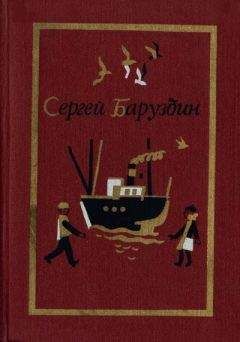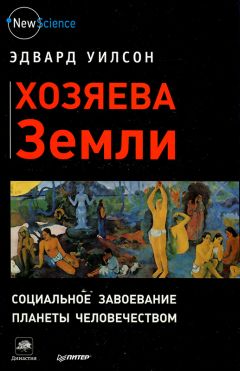Эдвард Уилсон - Хозяева Земли
Соотношение полов у общественных насекомых. Robert L. Trivers and Hope Hare, «Haplodiploidy and the evolution of the social insects» Science 191: 249- 263 (1976); Andrew F. G. Bourke and Nigel R. Franks, Social Evolution in Ants (Princeton, NJ: Princeton University Press, 1995).
Доминирование и полицейское патрулирование у общественных насекомых. Francis L. W. Ratnieks, Kevin R. Foster, and Tom Wenseleers, «Conflict resolution in insect societies» Annual Review of Entomology 51: 581-608 (2006).
Число спариваний у самок общественных насекомых. William О. Н. Hughes et al., «Ancestral monogamy shows kin selection is key to the evolution of eusocial-ity» Science 320:1213-1216 (2008).
Вклад в теорию совокупной приспособленности. Edward О. Wilson, «One giant leap: How insects achieved altruism and colonial life» BioScience 58:17-25 (2008); Bert Holldobler and Edward 0. Wilson, The Superorganism: The Beauty, Elegance, and Strangeness of Insect Societies (New York: W. W. Norton, 2009).
Концепция родства в теории совокупной приспособленности. Освещение этой темы, как и многое другое в последней части этой главы, заимствовано, с изменениями, из работы: Martin A. Nowak, Corina Е. Tarnita, and Edward 0. Wilson, «The evolution of eusociality» Nature 466:1057-1062 (2010).
Разные определения родства. Raghavendra Gadagkar, The Social Biology of Ropalidia marginata: Toward Understanding the Evolution of Eusociality (Cambridge, MA: Harvard University Press, 2001); Barbara L. Thorne, Nancy L. Breisch, and Mario L. Muscedere, «Evolution of eusociality and the soldier caste in termites: Influence of accelerated inheritance» Proceedings of the National Academy of Sciences, U.S.A. 100:12808-12813 (2003); Abderrahman Khila and Ehab Abouheif, «Evaluating the role of reproductive constraints in ant social evolution» Philosophical Transactions of the Royal Society В 365: 617-630 (2010).
Отказ от неравенства Гамильтона. Arne Traulsen, «Mathematics of kin- and group-selection: Formally equivalent?» Evolution 64: 316-323 (2010).
Критика теории совокупной приспособленности. Martin A. Nowak, Corina E. Tarnita, and Edward 0. Wilson, «The evolution of eusociality» Nature 466:1057-1062 (2010). See also Martin A. Nowak and Roger Highfield, SuperCooperators: Altruism, Evolution, and Why We Need Each Other to Succeed (New York: Free Press, 2011).
Слабый отбор в общественной эволюции. Martin A. Nowak, Corina Е. Tarnita, and Edward 0. Wilson, «The evolution of eusociality» Nature 466:1057-1062 (2010).
Альтернативные теории общественной эволюции. Martin A. Nowak, Corina E. Tarnita, and Edward 0. Wilson, «The evolution of eusociality» Nature 466:1057-1062 (2010).
Групповой отбор у микроорганизмов. Движущая сила эволюции эусоциаль-ных микроорганизмов. Обзор литературы и обсуждение альтернативных теорий приведены в работе: David Sloan Wilson and Edward 0. Wilson, «Rethinking the theoretical foundations of sociobiology» Quarterly Review of Biology 82(4): 327-348
(2007) .
Моногамия и родственный отбор. W. О. Н. Hughes et al., «Ancestral monogamy shows kin selection is key to the evolution of eusociality» Science 320:1213-1216
(2008) .
Множественное спаривание и большие колонии у общественных насекомых. Bert Holldobler and Edward О. Wilson, The Superorganism: The Beauty, Elegance, and Strangeness of Insect Societies (New York: W. W. Norton, 2009).
Родственный отбор как объяснение полицейского патрулирования у общественных нвсекомых. Francis L. W. Ratnieks, Kevin R. Foster, and Tom Wenseleers, «Conflict resolution in insect societies» Annual Review of Entomology 51: 581-608 (2006).
Соотношение полов у общественных насекомых. Robert L. Trivers and Flope Flare, «Flaplodiploidy and the evolution of the social insects» Science 191: 249-263 (1976).
Анализ соотношения полов. Andrew F. G. Bourke and Nigel R. Franks, Social Evolution in Ants (Princeton, NJ: Princeton University Press, 1995).
Субсоциальные пауки, j. M. Schneider and T. Bilde, «Benefits of cooperation with genetic kin in a subsocial spider» Proceedings of the National Academy of Sciences, U.S.A. 105(31): 10843-10846 (2008).
Помощники по уходу за птенцами. Stuart A. West, A. S. Griffin, and A. Gardner, «Evolutionary explanations for cooperation» Current Biology 17: R661-R672 (2007).
Естественная история, помощники у птиц. В. J. Hatchwell and J. Komdeur, «Ecological constraints, life history traits and the evolution of cooperative breeding» Animal Behaviour 59(6): 1079-1086 (2000).
ГЛАВА 19. ЗАРОЖДЕНИЕ НОВОЙ ТЕОРИИ ЭУСОЦИАЛЬНОСТИ
Образование элементарных общественных групп. J. W. Pepper and Barbara Smuts, «А mechanism for the evolution of altruism among nonkin: Positive assortment through environmental feedback» American Naturalist 160: 205-213 (2002); J. A. Fletcher and M. Zwick, «Strong altruism can evolve in randomly formed groups» Journal of Theoretical Biology 228: 303-313 (2004).
Примитивная общественная организация у термитов. Barbara L. Thorne, Nancy L. Breisch, and Mario L. Muscedere, «Evolution of eusociality and the soldier caste in termites: Influence of accelerated inheritance» Proceedings of the National Academy of Sciences, U.S.A 100:12808-12813 (2003).
Рабочие муравьи как роботы. Martin A. Nowak, Corina E. Tarnita, and Edward 0. Wilson, «The evolution of eusociality» Nature 466:1057-1062 (2010).
Групповой отбор и сверхорганизм. Bert Holldobler and Edward 0. Wilson, The Superorganism: The Beauty, Elegance, and Strangeness of Insect Societies (New York: W. W. Norton, 2009).
ГЛАВА 20. ЧТО СОБОЙ ПРЕДСТАВЛЯЕТ ЧЕЛОВЕЧЕСКАЯ ПРИРОДА?
Введение в теорию генно-культурной коэволюции. Charles J. Lumsden and Edward 0. Wilson, «Translation of epigenetic rules of individual behavior into ethnographic patterns» Proceedings afthe National Academy of Sciences, U.S.A. 77(7): 4382-4386 (1980); «Geneculture translation in the avoidance of sibling incest» Proceedings of the National Academy of Sciences, U.S.A. 77(10): 6248-6250 (1980); Genes, Mind, and Culture: The Revolutionary Process (Cambridge, MA: Harvard University Press, 1981); Edward 0. Wilson, Biophilia (Cambridge, MA: Harvard University Press, 1984).
Рвзвитие теории генно-культурной коэволюции. Charles J. Lumsden and Edward 0. Wilson, Promethean Fire: Reflection on the Origin of the Mind (Cambridge, MA: Harvard University Press, 1983).
Гены и культура. Luigi Luca Cavalli-Sforza and Marcus W. Feldman, Cultural Transmission and Evolution: A Quantitative Approach (Princeton, NJ: Princeton University Press, 1981); Robert Boyd and Peter). Richerson, Culture and the Evolutionary Process (Chicago: University of Chicago Press, 1985). В 1976 году Маркус Фельдман и Луиджи Кавалли-Сфорца опубликовали результаты проведенного ими анализа в работах: «Cultural and biological evolutionary processes, selection for a trait under complex transmission» Theoretical Population Biology 9: 238-259 (1976) и «The evolution of continuous variation, II: Complex transmission and assortative mating» Theoretical Population Biologyn: 161-181 (1977). Они описали два состояния признака, «опытный» и «неопытный»; вероятность состояния признака зависит от фенотипа родителя и генотипа потомка. Признаком считается общая одаренность. Ни тогда, ни позже никто не обратил внимания на многочисленные данные, свидетельствующие о закреплении эпигенетических правил в когнитивной деятельности человека. Историческая сводка исследований в области генно-культурной коэволюции, включая процитированные работы, приведена в: Charles). Lumsden and Edward О. Wilson, Genes, Mind, and Culture: The Revolutionary Process (Cambridge, MA: Harvard University Press, 1981), pp. 258-263.
Эволюция переносимости лактозы взрослыми людьми. Sarah A. Tishkoff et al., «Convergent adaptation of human lactase persistence in Africa and Europe» Nature Genetics 39(1): 31-40 (2007).
Генно-куяыурная коэволюция и повышение разнообразия человеческого рациона. Olli Arjama and Tima Vuoriselo, «Gene-culture coevolution and human diet» American Scientist 98:140-146 (2010).
Эволюция рвциона человека. Richard Wrangham, Catching Fire: How Cooking Made Us Human (New York: Basic Books, 2009).
Генно-культурная коэволюция и избегание инцеста. Приведенные в этой главе соображения об избегании инцеста заимствованы в основном из работы: Edward О. Wilson, Consilience: The Unity of Knowledge (New York: Knopf, 1998) с привлечением свежих литературных данных.
Подтверждение эффекта Вестермарка. Arthur Р. Wolf, Sexual Attraction and Childhood Association: A Chinese Brief for Edward Westermarck (Stanford, CA; Stanford University Press, 1995); Joseph Shepher, «Mate selection among second generation kibbutz adolescents and adults: Incest avoidance and negative imprinting» Archives of Sexual Behavior 1(4): 293-307 (1971); William H. Durham, Coevolution: Genes, Culture, and Human Diversity (Stanford, CA: Stanford University Press, 1991).
Заболевания, связанные с инбридингом. Jennifer Couzain and Joselyn Kaiser, «Closing the net on common disease genes» Science 316: 820-822 (2007); Ken N. Paige, «The functional genomics of inbreeding depression: A new approach to an old problem» BioScience 60: 267-277 (2010).
Экзогамия и эффект Вестермарка. Многочисленные культурные аспекты экзогамии, связанные с избеганием инцеста, обсуждаются в монографии: Bernard Chapais, Primeval Kinship: How Pair-Bonding Gave Rise to Human Society (Cambridge, MA: Harvard University Press, 2008).
Альтернативное объяснение эффекта Вестермарка. William Н. Durham, Coevolution: Genes, Culture, and Human Diversity (Stanford, CA: Stanford University Press, 1991).
Определение понятий «эпигенетический» и «эпигенетические правила». Charles J. Lumsden and Edward О. Wilson, Genes, Mind, and Culture: The CoevolutionaryProcess (Cambridge, MA: Harvard University Press, 1981); Tabitha M. Powledge, «Epigenetics and development» BioScience 59: 736-741 (2009).
Цветное зрение. Приведенные в этой главе рассуждения о цветном зрении и колористической лексике в основном заимствованы из работы: Edward О. Wilson, Consilience: The Unity of Knowledge (New York: Knopf, 1998) с привлечением дополнительных, в том числе новейших, данных.


